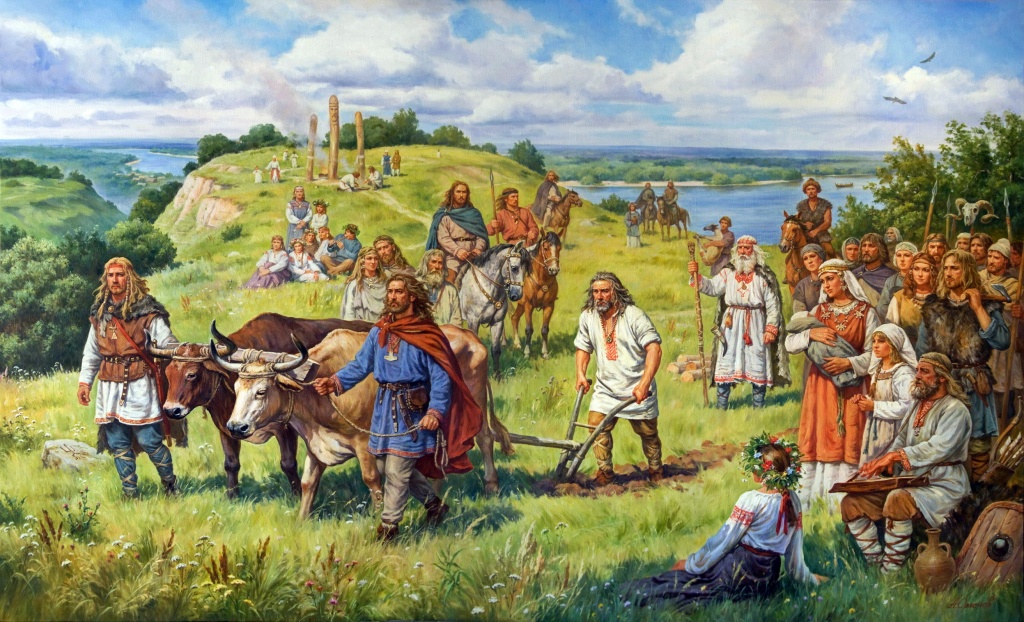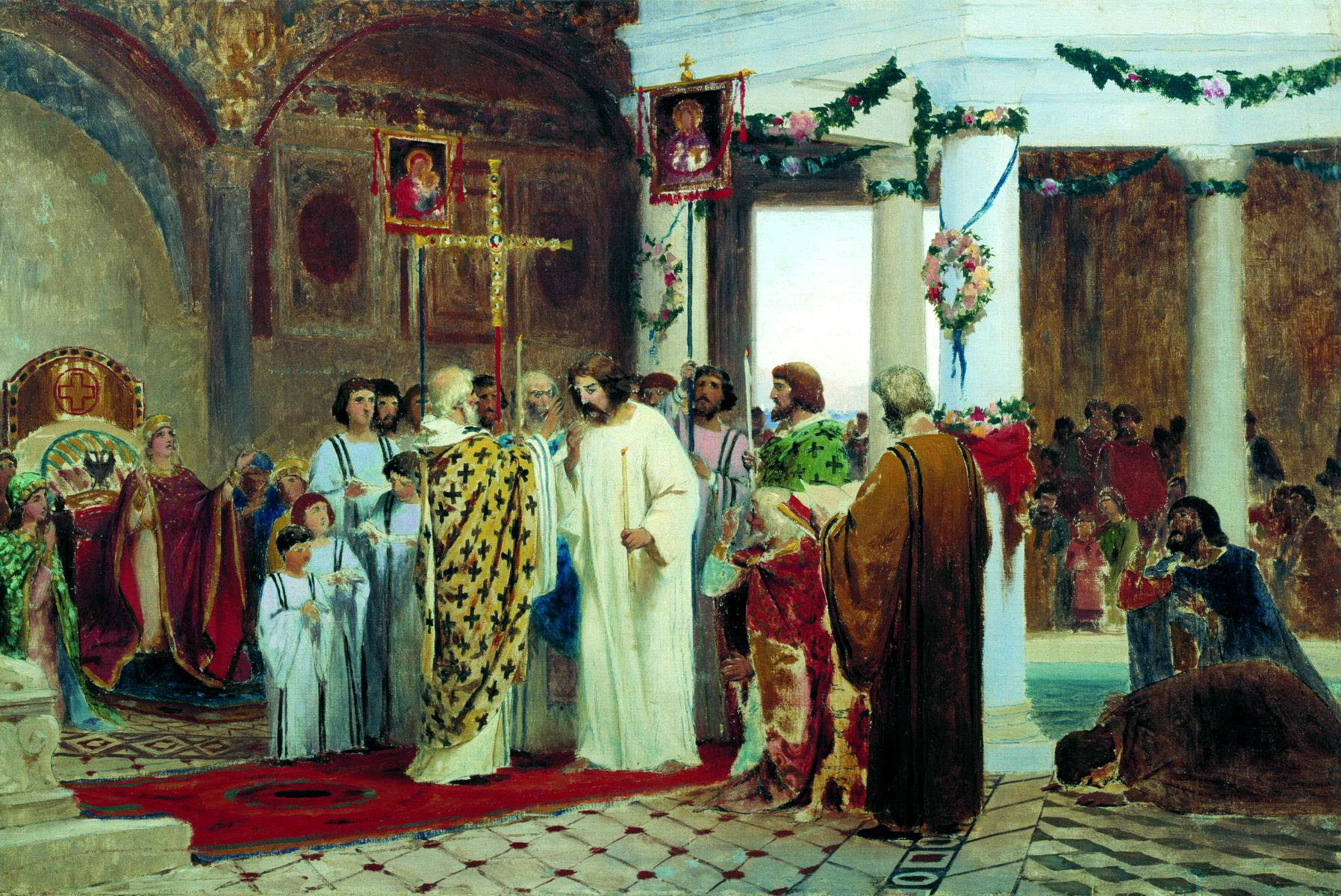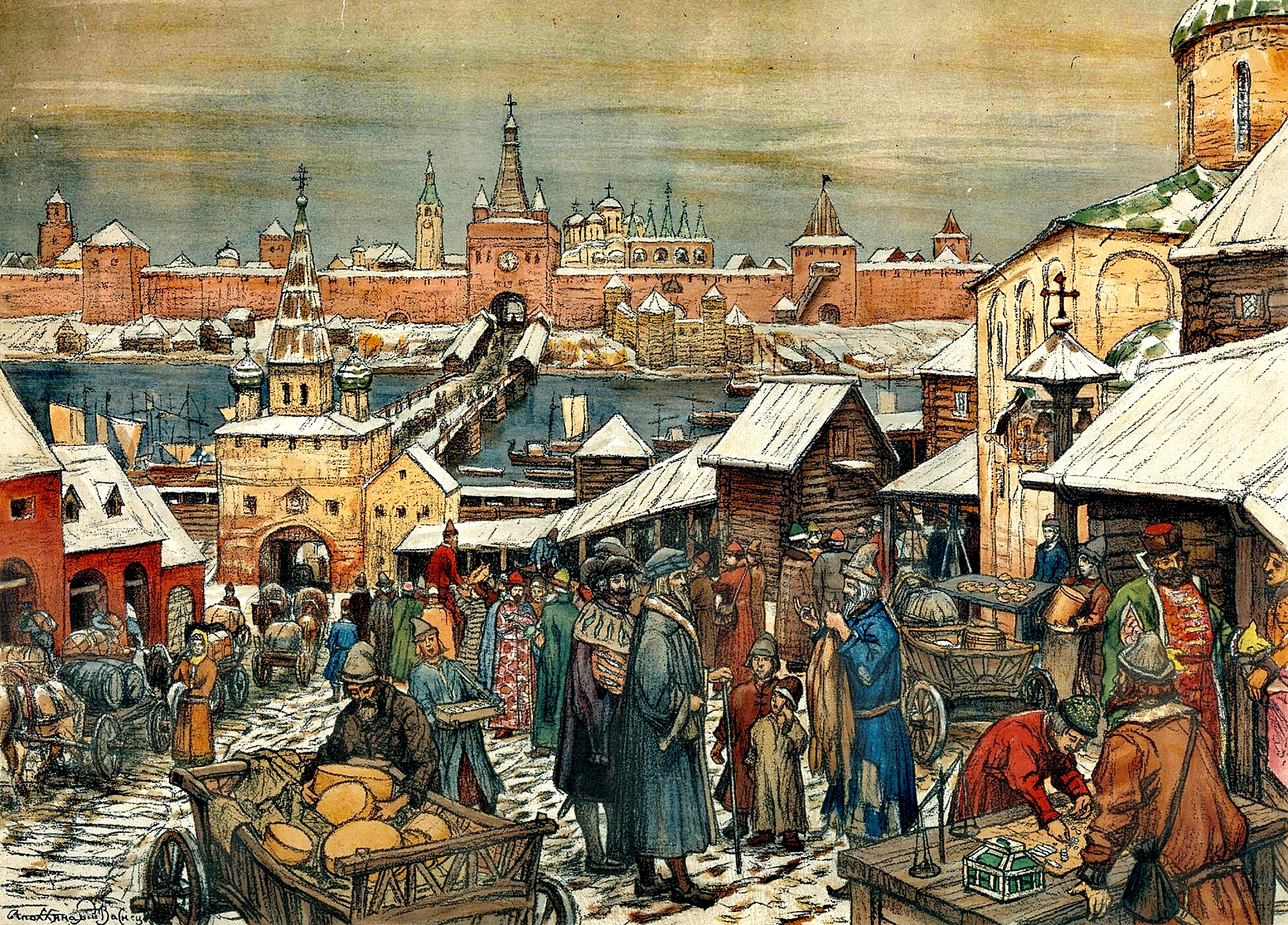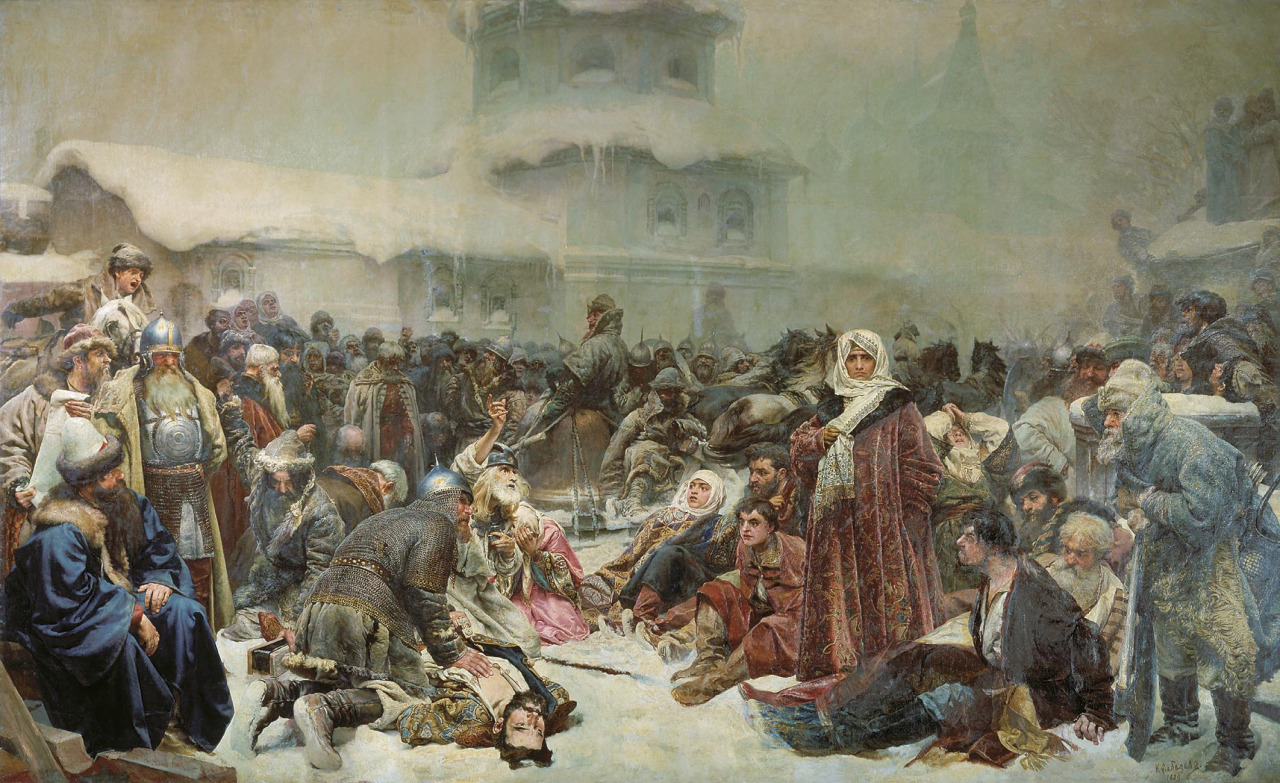This is the first of eight parts that will explore the benefits and drawbacks of the Petrine Reforms as well as outline a brief, abridged history of events in Russia prior to the reign of Peter I. Initially conceived last November as a modest 4,000 word essay, this work has significantly expanded its scope in no small part thanks to the feedback and suggestions of this blog’s most active patrons. The final product is too lengthy to read comfortably as a single post. It has been broken into eight chapters and will be released over the next few weeks.
I.
The price of reform can be difficult to ascertain, but there is always an ontological shift with transformation. Whether changes are positive and rehabilitative, or revolutionary and potentially adulterating, the object of reformation will always undergo transformation. The degree to which such events are necessary or beneficial is subject to a complex matrix of variables, and the nature of the initiatory agency is such that it is often unclear which individuals or forces are ultimately culpable for the shift.
It is interesting, then, to analyze the life and times of Peter the Great, a man who would transform his nation and be credited for a veritable revolution in the forms, structures, and society of Russian life. These reforms are frequently lauded as necessary modernizations, but contained within were myriad injuries to that which was cardinal to the Russian ethos. The present intention is to not to justify or chastise Peter’s legacy, but rather to explore and attempt a form of limited revelation about that time and place.
An almost impossibly heroic figure – whose life made a great impression upon the author at an early age – Peter, the first Emperor of all Russia stands astride history as a titan among men.
Hailed by some as the greatest man of his country, the accomplishments of Peter the Great in society, war, and diplomacy are numerous. They are a testament to the immense drive, talent, and energy of an exceptional individual. Physically massive with intensely dark eyes and an irresistibly powerful personality, Peter can lay claim to superhuman status as few others can.
His impact on Russia and the development of that nation is difficult to overstate. The series of actions known as the Petrine reforms attempted a societal makeover of revolutionary ambition a century before it was fashionable.
Progress, defined purely in terms of the military and political, was certainly achieved, but the cost to the fabric of Russian life and tradition was not insubstantial. Ultimately, Peter combined a deeply traditional office with a very modern ethos – driven by a heroic will to power to achieve a long-term vision for his nation, state, and empire. A profoundly rich set of paradoxes defined the man and his cohort of advisors, allies, and doyens. And taken together, this man and his men defined an era and attempted to reshape the historical destiny of Russia.
Contemporary, popular history treats Peter with a curious schizophrenia – on the one hand he is praised for ‘Westernization’, ‘modernization’, and ‘Enlightenment values’ – dragging Russia out of the dark ages and so forth; he is also excoriated for his repressions, familial failings, and authoritarian characteristics. And of course, these assessments are always done in the broader context of modern and post-modern liberal historiography.
Russia itself is possessed of an interesting and complex history as well as its own inherent tradition. Vast spaces, challenging environments, powerful institutions, great tribulations, and rich spiritual inheritance have created a place of energy for a people of intensity.
It is time for a rather lengthy stage-setting tangent. It is certainly in vogue to attempt significant revision of historical records – and revisionism in pursuit of restoration can prove edifying; it is also true that creative revisionism can be a form of destructive iconoclasm, robbing and disprivileging peoples even in their own lands of their heroes and identities. Certainly the works of Professor Fomenko have proved titillating. However, in this modest retelling, we shall stay with what passes for the generally accepted:
The lands that would become the heart of European Russia have been inhabited for a long time; however, it is only comparatively recently that Russian ethnogenesis occurred. The Slavic peoples were among the last of the great peoples of Europe to participate in the great migrations – the first Slavic great power, the First Bulgarian Empire, began roughly two centuries after the death of Attila. The point at which Slavic tribes gained political and military power in their own right is difficult to pinpoint. Finding the precise relationships and divisions between the Slavs and the Gothic, Hunnic, and Sarmatic peoples has proven to be an elusive task. The earliest written records of peoples definitively referred to as Slavs (under the names Antes and Sclaveni) date from the early 6th century in East Roman sources. Earlier Roman references talk of the Veneti, a people living beyond the Germans and Sarmatians – in lands between the Baltic Sea and the Sarmatian held regions to the south in the modern Ukraine. The precise relationship between the Veneti and the Slavs (and Balts) is not fully understood, but it is not a great leap of imagination to draw a connection.
Contemporary Slavic nations can be roughly divided into western, southern, and eastern groups. Russia, naturally, belongs to the latter category. Much of early Slavic and Russian history is extraordinarily sparse in terms of historical records. But it is certain that there was plenty happening — not writing things down does not mean inactivity, merely a lack of scribal traditions. However, it is especially difficult to pinpoint events prior to the 9th century AD in the eastern Slavic lands. There is also a certain degree of controversy as to the degree and impact of Scandinavian influence (and blood) in the early Russian states. There are plenty of interesting theories and a number of modern studies that have attempted to explore that and other things – but it is clear that the Rus’ had already begun to coalesce as a set of peoples distinct from Scandinavians, Balts, Finnics, Sarmatians, and other Slavs sometime before AD 900.
Which brings us to Mother Kiev itself. The Kievan state, which is generally referred to as ‘Kievan Rus” since the 19th century, arose in the late 800s to dominate most eastern Slav lands. Initially based in Novgorod (Velikiy, not Nizhniy) – literally ‘New City’ or ‘New Fort’, the center of gravity moved south to better take advantage of geography to enhance access to the East Roman Empire for trade and war.
The people and leaders of Kievan Rus’ referred to themselves as Rus’ and their lands as Ruskaya Zemlya (Рóyсьскаѧ землѧ – Rus’ Land). The Greeks knew them as the Ῥῶς (Rous) from Ῥωσία (Rousia), the Arabs knew both as Al-Rus, and in the Latin tongue, Rusia, Ruzzia, Ruscia, Rutenia all feature. The word ‘Russia’ comes from this time and means the Land of the Rus’. As a result, when we speak of Russian ethnogenesis, the rise and fall of the Kievan state is of central importance.
This first Russian state had a complex geostrategic situation and pursued war, commerce, and diplomacy with many of its formidable neighbours.
The perceptive may note that the first capital of this project was not Kiev but Novgorod. The semi-legendary founder of Russia, Riurik, would supposedly found a fortress at Novgorod near another prior settlement of import (hence the name) that would be his capital. He would later die in this location but not before seeding what one could argue was the greatest of all Slavic dynasties. Known to history as the Riurikids, they would rule for over 700 years in the Russian lands until the death of Vassili IV in 1612.
The story of how the capital was shifted to Kiev is a short anecdote and worthy of the slight detour.

In this version of events (and there are several), Askold and Dir, two of Riurik’s top warlords, were planning to go to Tsargrad, i.e. Constantinople, and saw an interesting settlement on a hill while traveling down the Dniepr. They made inquiries, and determined to seize it. This achieved, and having expelled the Khazars to whom the area had owed fealty, the two lords began to repopulate and develop the area as a new base from which to attack the Romans. After the death of Riurik in 879, a cousin (or brother-in-law, shocker, this is another controversy), Prince Oleg would rule on behalf of the young Prince Igor, son of Riurik. It was Prince Oleg who would make the move to Kiev (deposing and slaughtering Askold and Dir in the process) and declare it ‘the mother of Rus’ cities’ for whatever reason around 882.
Askold and Dir would get to launch their attack on Constantinople and would participate in a large and unexpected strike on the great city in 860 or between 863-866. This would be the first major Russian military expedition to be recorded by the East Roman chroniclers. The size of the forces involved are not properly known but the Russians had over 200 small ships and were able to inflict significant damage to the surrounding countryside. The East Roman empire was at the time engaged in major conflict with the Arabs and had very little in the way of men or ships to repel this onslaught. They were, however, ultimately able to repulse the assault in what proved to be a remarkable existential struggle. Roman technological abilities apparently proved decisive as the mysterious and potent ‘Greek fire’ was used to great effect. Perhaps this failure helped encourage Oleg to justify his move against Askold and Dir, who really knows. What is true is that in the ensuing decades major cultural and trade links would be established between the Rus’ and the East Romans. And most importantly, there would be a great many holy men and prelates of the Church making the long and dangerous journey north to lands unknown.
Which leads us rather neatly to what is possibly the single most important event in all the history of the Rus’ – the turning away from the pagan gods and the confession by the rulers and people of the Nicaean creed. This is traditionally said to have happened in the year 988.
As with many great transitions, it is a fairly complex story that really does deserve an exploration unto itself. Suffice to say, that Grand Prince Igor (the son of Riurik) had one hell of a wife. When neighboring Drevlians brutally murdered her husband, the widowed Grand Princess Olga began a long and bloody campaign to avenge the death of her Igor.
When Drevlian diplomats came to suggest she marry the murderer, Prince Mal, and submit Kiev to the Drevlians, she responded favorably. As the story goes, the Drevlian delegation came by boat, and were told to get back into their boat so as to be carried aloft in their boat in the triumphal procession. The Drevlians, seeing this as a great honor, apparently complied only to be carried into a pit where there were buried alive to the last man. Olga apparently taunted them, asking them as they were buried whether they ‘found the honor to their taste’.
The second stage of the revenge campaign involved asking the Drevlians (who were yet unaware of the fate of their compadres) to send their most honored men to Kiev so that she might go to her wedding with the proper honor. These men were duly dispatched and were persuaded to partake of a bath in a single building – which was surrounded and burned with all the Drevlians inside.
Stage three involved removing the gloves – she requested that the Drevlians prepare mead so that she could go to her husbands grave to properly mourn. Once again, the apparently gullible Drevlians complied and got so drunk that at the appointed time at the gravesite, Olga gave a signal and her retinue set to work. They filleted over 5,000 Drevlians of various ages and degrees of sobriety.
Soon there was a proper battle where the Kievens absolutely wrecked the Drevlians.
Olga’s army laid siege to the city where her husband was murdered, Iskorosten, and began to starve out the Drevlian defenders. After a year, she managed to trick the Drevlians into giving her pigeons from each citizen’s house as part of a peace deal. Bits of flammable sulphur were tied to the birds’ legs. These were set alight and the birds were released where apparently their homing instincts ensured that within a few hours the city was totally ablaze. Olga had most of the fleeing inhabitants slaughtered and those few that remained were forced to pay heavy tribute. The remaining Drevlian territory was annexed shortly thereafter.
It makes a great story – it comes from the Primary Chronicle, the best, and only, real contemporary account of those times. This work has acquired many detractors over the years and who knows which tales are true and which are not. However, it is nice to think that these little anecdotes about Princess Olga have a certain veracity. It is rather an interesting background for the first Christian ruler (albeit, as a regent for her son Sviatoslav) in Russia.
Her conversion process, which occured in Constantinople, is equally interesting. The reigning Emperor Constantine VII had marital designs on her – she was quite hot and very intelligent apparently. This outcome Olga did not want. So, she asked, with her usual deviousness, the Emperor to be her godparent for her baptism in the Church. Under the laws of the Church, this would make the Emperor her spiritual parent and thus any intimate relationships would be considered legally and spiritually incestuous. The Emperor was apparently not fully up to speed on basic canon law and duly agreed to be her Sponsor.
Of course, once baptised, Olga protested most innocently and offered her regrets at the unfortunate turn of events. She would always regard the Emperor with filial devotion but she could never marry him, alas!
Once again, a good story that may have some truth to it.
Her son Sviatoslav remained a pagan but loved his mother very deeply in spite of her religious conversion. So much so, that upon Olga’s death, Sviatoslav organized a proper Christian funeral and burial for her – something that was nearly unprecedented at that time in pagan Russia. Her tomb remained a major landmark in Kiev until its destruction by invading Mongols some two centuries later.
It was Sviatoslav’s son, and Olga’s grandson, the Grand Prince Vladimir the Great that would effect in Russia, as Constantine the Great had done for Rome over 600 years prior, the conversion of the nation. But we will save Vladimir and his life for another time.

The Kieven Rus’ state enjoyed a major golden age during the time of Vladimir’s son Yaroslav the Wise (with the unfortunate Sviatopolk reigning in between them). By the year 1000, there were probably over 5 million people within their borders – this figure would grow to over 7 million by the time of the Mongol invasions. During this period they established relationships with the rising Polish kingdom, the Holy Roman Empire, and, of course, developed and enhanced the existing ties to Constantinople.
Nominally, this was a period of relative unity; in practice however, there was a great deal of independence for some of the more distant principalities. Places like Ryazan, Smolensk, Pereyaslavl, Novgorod, Vladimir-Suzdal, and many others managed to acquire varying degrees of sovereignty as regional lords gained power after the death of Yaroslav. This process gradually accelerated and major cities began to exercise more or less complete sovereignty in their affairs after a few decades even though their rulers were usually related (or, perhaps, because their rulers were related – the succession laws passed headship to the eldest member of the family rather than to the eldest son – creating plenty of interesting situations).
Another factor that would begin to take effect after the mid 1100s, was the decline of Constantinople as the sole point of commercial exchange between the East and the West. Kievan economic power was heavily dependant on this relationship and suffered whiplash everytime there were major disruptions. When the Fourth Crusade sacked Constantinople, the Dniepr trade almost completely dried up – leaving the area economically depressed and much, much weaker when the Mongol arrived some decades later.
It was about this time, like many other places, the Novgorod broke away from Kiev and would form a rather interesting experiment in republican politics. Again, another excellent subject for another topic. Suffice to say that this easternmost member of the Hanseatic league set up a unusually public-spirited exercise in constitutional government where they signed contracts with their ruling princes – who got to command the armies and enforce laws but were not allowed to collect taxes or own land (they were paid salaries). There was a Veche, or assembly, that had sovereignty over the various offices of the republic. And there was a significant literary and cultural scene, as well as an active guild system. The Church here was also active, and produced many of the great icons of the era. Unusually, their archbishop was elected by the public assembly subject to approval by the Metropolitan of All Russia.

Novgorod managed to avoid all depredations at the hands of the Mongols because they preemptively, and actively, sought to join the Khanate as a tributary state. The bribe they sent to Subotai was of an unusually large size, that combined with their geographic separation from the Horde’s main line of advance dissuaded all hostile Mongolian actions.
As with many affluent and cultured places, the Republic attracted a great deal of attention. Later, in the 1400s, the threats posed by its three powerful neighbours – Lithuania, Tver, and Muscovy – kept its diplomatic corps busy for decades trying to stay independent. Eventually, however, in 1478, after a long and complex series of maneuvers, the clock ran out as Ivan III of Moscow (whom we shall run into again soon) put much of Novgorod to the torch and annexed it permanently.

But back to Kiev’s decline: even before the desolation in 1240 by Batu Khan, the power center of Russia had already begun to shift to Vladimir, the seat of a vast principality far to the northeast.
In 1113, Vladimir II Monomakh (for he was a relation of the East Roman Monomachos dynasty – a sobriquet of some cachet), was invited by the Kievan population to become Grand Prince after the death of his cousin Sviatopolk II. The 12 years of Vladimir II were considered after his death to be the last golden time in Kiev; the city’s population may even have exceeded 100,000, making it one of the largest in all Europe. It was a time when many sacred relics were acquired and many institutional reforms enacted. Vladimir came to Kiev late in his life after having built quite an empire. He is, indeed, credited with the foundation of the city of Vladimir, where a great many relations would learn to rule. His son by his first, English wife, the legendary Yuri Dolgorukiy, was sent there in 1108 to act as governor. Incidently, this wife was Gytha of Wessex, a daughter of Harold Godwinson, last Saxon king of England. There are many interesting intermarriages in early Russian history. For Yuri in Vladimir, there were shenanigans with the local boyars, and Yuri moved his seat a few miles away to the venerable, and then more prestigious, town of Suzdal in 1121.
With the death of Vladimir II in 1125, there were planted seeds of a vast power vacuum. Yuri, which is one of several Russian forms of George, had already amassed many lands and the fealty of many lords in the north and east. His sobriquet – Dolgorukiy – means ‘long-armed’ because of his apparent ambition. There was stability for a brief time as Mstislav, Yuri’s older brother, ruled in Kiev for several years. But very quickly, the situation would start to unravel as internecine warfare and palace intrigues eroded the authority and power of the Grand Princes.
Yuri, with his eye on the main chance, was an active competitor in this contest. Well aware of his dynastic position, his claim to legitimacy was strong. After all, primogeniture was not a hard and fast rule. Yuri fought with Chernigov, Novgorod, and Pereyaslav and, after 24 years since the death of his father, Yuri finally conquered Kiev in 1149. However, his nephew staged an uprising that would drive Yuri out two years later. Four years later, in 1155, Yuri would reclaim Kiev only to be poisoned fatally by the Kievan boyars at a feast in 1157, ending the life of a man who had aggressively promoted the settlement and colonization of unpopulated regions.
The greatest of of Yuri’s new settlements was founded in 1156 on the site of an earlier, minor hamlet. The construction of a wooden fort on the banks of the river Moskva, or Moscow, heralded the beginning of a city that would be destined to rule over all Russian cities. The beginnings were, however, modest; and it would take well over a century for Moscow to achieve any sort of power in its own right.
Yuri’s son Andrei Bogolyubsky would not forget the murder of his father at the hands of Kievan notables. Much like his father, he would prosecute a campaign of ambition that would culminate with the absolute devastation of Kiev in 1169. The decision to sack the city probably had more to do with revenge than realpolitik, but its final result was to forever break Kiev’s ability to rule over all of Russia. From now on, the most powerful men of Russia would be Kievan in heritage but not geography.


Russia must wage aesthetic struggle against petrine reforms! Pyotr Velicky in western garb is out of place. He matches neither the landscape nor the spirit. It is an affection. A costume. Tsar Nicholas II at the fancy dress ball, garbed as in the days of Alexander Nevsky, radiates majesty and quiet dignity. This is true soul of Rus.
LikeLike